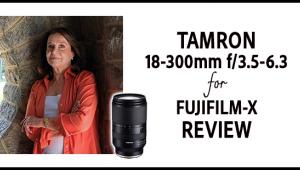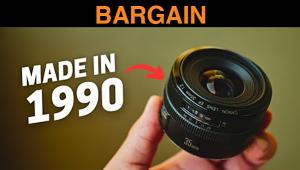Tamron’s SP AF60mm F/2 Di II; A 1:1 “True” Macro For APS-C D-SLRs
Long considered the focal-length sweet spot for macro work, the 60mm focal length of the new Tamron 60mm f/2 lens ($569 MSRP) converts out to 96mm for Canon and 90mm for Nikon APS-C D-SLRs. Unlike some “close-focusing” lenses, this is a true macro, offering a 1:1 reproduction ratio (life size) and, in a true bonus for fans of bokeh, an f/2 maximum aperture. Tamron tells us that this is actually the seventh generation of this focal length in their line, given that you count from the first 90mm in 1979, so you would expect that by now they got it right.
 |
One challenge in developing fast lenses is the restraint of aberrations, accomplished here with two large low-dispersion glass elements in the first of its 10 groups. To further enhance the images the lens produces, Tamron utilized new Broad-Band Anti-Reflection multilayered coatings, which in part contributes to the crisp images the lens yields.
You might think that having an f/2 maximum aperture would result in a fairly bulky lens, but this unit comes in with a 55mm filter size, internal focusing, 2.9” in length, and a fairly lightweight 14.1 oz. Part of the weight savings comes from using injection-molded plastic parts
in construction.
 |
|
|
While the lens has an AF/MF switch, you might tend to rely on manual focus more than you think, particularly with critical close-up work at wide apertures. One technique is to peg the general focusing using AF (being sure to set the focusing point to cover the foreground element in the scene) and then switch to manual to get it just right. Here the Tamron lens pays dividends, as you needn’t flip a switch to go from AF to MF and can turn the large, textured manual focusing collar even while in Autofocus mode. This to me is a small bit of genius that recognizes how folks actually work with super close-ups in the field.
 |
|
|
Of course, working on a tripod is best for critical close-up work, but even then using manual is, in my way of working, the way to nail the exact point of focus desired, particularly at very wide apertures with complex subjects, that is, those that offer many possible focusing possibilities. Those brave enough to work sans tripod will certainly benefit from the lack of need to flip a switch when going from AF to MF for focus tweaking.
- Log in or register to post comments

















































